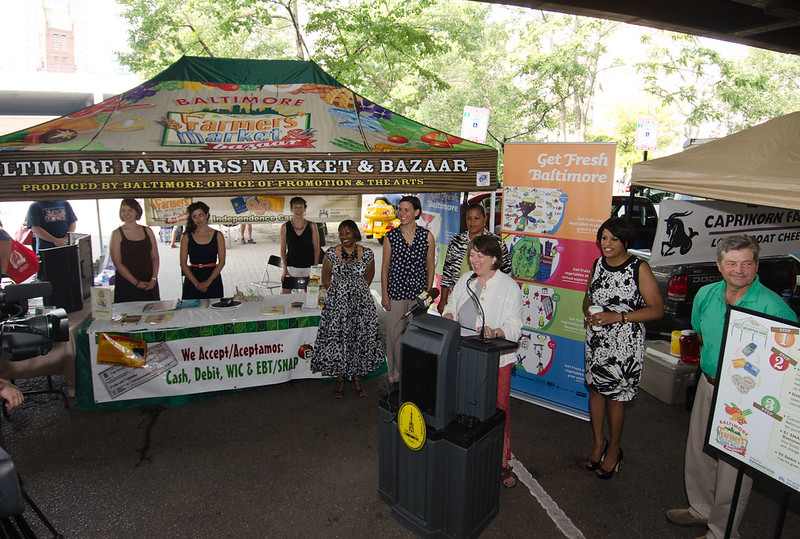A federal judge has ordered the Trump administration to fully fund Supplemental Nutrition Assistance Program (SNAP) benefits for November 2025, directing the government to tap available contingency funds and other resources after the agency initially attempted to halt or partially reduce payments during the ongoing government shutdown. U.S. District Judge John J. McConnell Jr. of the U.S. District Court for the District of Rhode Island issued the enforcement order on November 6, 2025, after admonishing federal officials for failing to comply with his earlier directive to quickly restart payments. The ruling came in response to a lawsuit filed by a coalition of cities, nonprofits, unions, and small businesses represented by Democracy Forward, a government accountability organization. The case was filed under the Administrative Procedure Act, which governs how federal agencies must make decisions. Learn more about government assistance programs on KarmActive.

⚠️ What This Ruling Means
Judge McConnell found that the Trump administration acted “arbitrarily and capriciously” under the Administrative Procedure Act when it refused to use available federal funds to pay full SNAP benefits for November. The court determined that approximately $6 billion in SNAP contingency reserves and over $23 billion in the Section 32 fund (reserved for child nutrition and tariff-related uses under agricultural law) were legally available for use. The judge emphasized that “people have gone without for too long” and that “not making payments to them for even another day is simply unacceptable.” Read more on food security advocacy and policy.

Understanding the Legal Decision
The court’s order rested on two key conclusions. First, the judge noted that federal law permits USDA to use contingency funds and the Section 32 account (which draws from tariff revenues and agricultural appropriations) during emergencies. The administration’s own actions undermined its argument against using these funds: the court pointed out that USDA had already transferred $750 million from the Section 32 fund to the WIC food assistance program for pregnant women, new mothers, and young children—demonstrating the fund’s flexibility. Second, Judge McConnell found that the administration’s decision to provide only partial benefits (first 50%, then 65%) was not a “reasoned agency decision” as required by the Administrative Procedure Act. The administration had told the court that implementing reduced benefits could take weeks or even months due to state system reprogramming, yet it still refused to act “expeditiously”—the standard the judge had set in his earlier order. This apparent contradiction led the judge to conclude that the agency had acted arbitrarily. Explore federal policy analysis and case law resources for additional context.
SNAP benefits are loaded onto Electronic Benefit Transfer (EBT) cards through a multi-step process. When a payment formula changes—moving from partial to full, or from one partial amount to another—state agencies must reprogram their eligibility systems, recalculate each household’s allotment based on family size and income, and resend updated recipient files to EBT processors and retailers. These processors verify the information and load the new amounts onto millions of cards. The process requires coordination between state agencies, federal systems, contracted EBT vendors, and retail networks. Depending on when each state’s systems are updated and when their vendor processes the file, recipients may see delays ranging from one to several days, or even longer in states with older technology infrastructure.
Check your state’s official SNAP portal or EBT card balance first—benefits may have arrived but not yet shown a pending status. Each state operates its own SNAP system; for example, Georgia uses the Georgia DHS portal, and Rhode Island uses its Department of Human Services SNAP disruption hub. Never share your EBT PIN or personal information by phone or text—your state will never ask for these details. If benefits have not arrived by your usual payment date, contact your local DFCS (Department of Family and Children Services) office or your state’s DHS social services department. They can confirm your payment date and provide assistance if funds are missing. Additionally, call the state’s official SNAP hotline for real-time updates. Find comprehensive welfare benefits information on KarmActive.
The court cited approximately 42 million Americans who receive SNAP benefits, making SNAP the nation’s largest nutrition assistance program. Of those, the judge specifically noted that 16 million are children who rely on these benefits for daily food. In Rhode Island alone, roughly 145,000 recipients redeem approximately $29 million monthly in SNAP purchases—illustrating both the scale and the direct economic impact on local grocery stores and food retailers. Rhode Island’s official SNAP disruption hub provides live updates on benefit status. Beyond the state level, food banks across the country mobilized emergency resources in response to the potential benefit gap.
The Trump administration immediately appealed Judge McConnell’s November 6 enforcement order to the U.S. Court of Appeals for the First Circuit (based in Boston). The administration argued that only Congress can appropriate additional SNAP funding, and that reallocating funds from other sources would harm child nutrition programs like WIC. The appellate court initially denied the government’s request for an emergency stay of the order, but the case remains under review. The appellate process will determine whether Judge McConnell’s full-funding order stands or is modified. As of November 7, 2025, states reported that they have begun issuing full November SNAP benefits while the legal matter proceeds. Learn more at KarmActive’s legal updates page.
✓ What You Should Do Now
- Check your payment date: Visit your state’s official SNAP portal or call your state’s SNAP hotline to confirm when full benefits will post to your card. Find your state’s benefit office.
- Guard your EBT PIN: Never share your Personal Identification Number or Social Security number by phone, text, or email. Legitimate state agencies will never request this information. Report any suspicious calls to your state’s SNAP fraud hotline immediately.
- Contact DFCS if needed: If you do not receive your benefit by your usual payment date, call your local Department of Family and Children Services (DFCS) or state social services office. They can verify your eligibility and payment status. Get help finding your local office.
- Access emergency food resources: If you face an immediate food need before benefits arrive, contact 211.org or call 2-1-1 to locate nearby food banks, soup kitchens, and community meal programs in your area. Organizations like the Rhode Island Community Food Bank and local food bank networks provide emergency assistance.
- Stay informed: Monitor your state DHS SNAP page and sign up for text or email alerts if your state offers them. This ensures you receive timely updates if any future disruptions occur. Set up alerts on KarmActive.
Community Organizations Step Up
Local philanthropic and food assistance organizations mobilized quickly in response to the potential SNAP disruption. The Rhode Island Foundation pledged $1 million in emergency grants—the largest single grant the Foundation has made in recent years—to support the Rhode Island Community Food Bank and other local food assistance organizations. Food banks across the country reported record client demand in recent weeks as families prepared for potential benefit cuts. Metro Atlanta food assistance networks and regional food bank coalitions activated emergency distribution protocols and increased food procurement to meet elevated demand. These local responses underscore both the vulnerability of families who depend on SNAP and the importance of diversified food assistance infrastructure including community food banks, nonprofit meal programs, and emergency relief networks. Explore food bank and community support resources on KarmActive.
How SNAP Benefits Actually Get to Your Card
SNAP benefits reach recipients through the Electronic Benefits Transfer (EBT) system, a nationwide network used in all 50 states, U.S. territories, and the District of Columbia since June 2004. Here is how the process works: First, state agencies (such as your local DFCS office or state Department of Human Services) maintain records of all approved SNAP recipients and calculate each household’s monthly benefit amount based on family size, income, and other eligibility factors. When the federal government allocates funds to a state, the state agency creates an electronic file containing recipient names, household IDs, benefit amounts, and other identifying information. This file is then transmitted to contracted EBT vendors and processors who manage the state’s EBT system. The processor verifies the data, loads the benefit amounts into each recipient’s account, and coordinates with retailers to ensure the benefit is available on the EBT card. At checkout, the retailer’s point-of-sale system contacts the processor to confirm the recipient’s available balance, processes the transaction, and debits the SNAP account for the purchase. The retailer’s account is credited, and payment is settled at the end of each business day. When payment formulas change abruptly—as happened when the administration shifted from full to 50% to 65% to full payments within days—each state must reprogram its systems, recalculate benefits for millions of recipients, and resend data to vendors. This technical work, while routine, requires coordination and time, which is why multi-day delays occur even after federal funding becomes available. Learn more on EBT technology and system operations.
This coverage addressed Judge John J. McConnell Jr.’s November 6, 2025 enforcement order requiring the Trump administration to fully fund SNAP benefits for November; the administration’s subsequent appeal to the First Circuit Court of Appeals; the underlying legal grounds (the Administrative Procedure Act and availability of contingency funds); the operational delays that may persist as states reprogram EBT systems; the human impact (42 million recipients, including 16 million children); and practical guidance for recipients regarding payment dates, emergency food resources, and fraud prevention. Community responses including emergency grants from foundations and coordinated food bank activation were also documented. For the most current information on November SNAP benefits in your state, visit your state’s DHS or SNAP program website or contact your local DFCS office. For information about legal developments in this case, consult official court records or statements from Democracy Forward. Learn more about SNAP and food security issues through the U.S. Department of Agriculture Economic Research Service, and access comprehensive resources at KarmActive’s government programs directory.

















